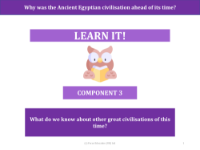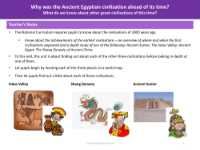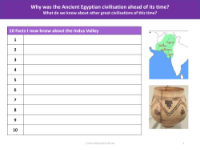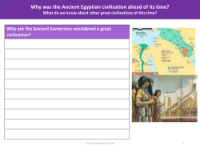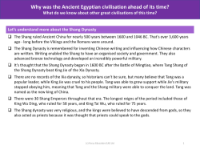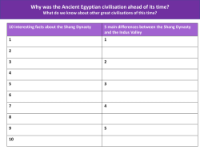The Indus Valley: Key information - Info sheet
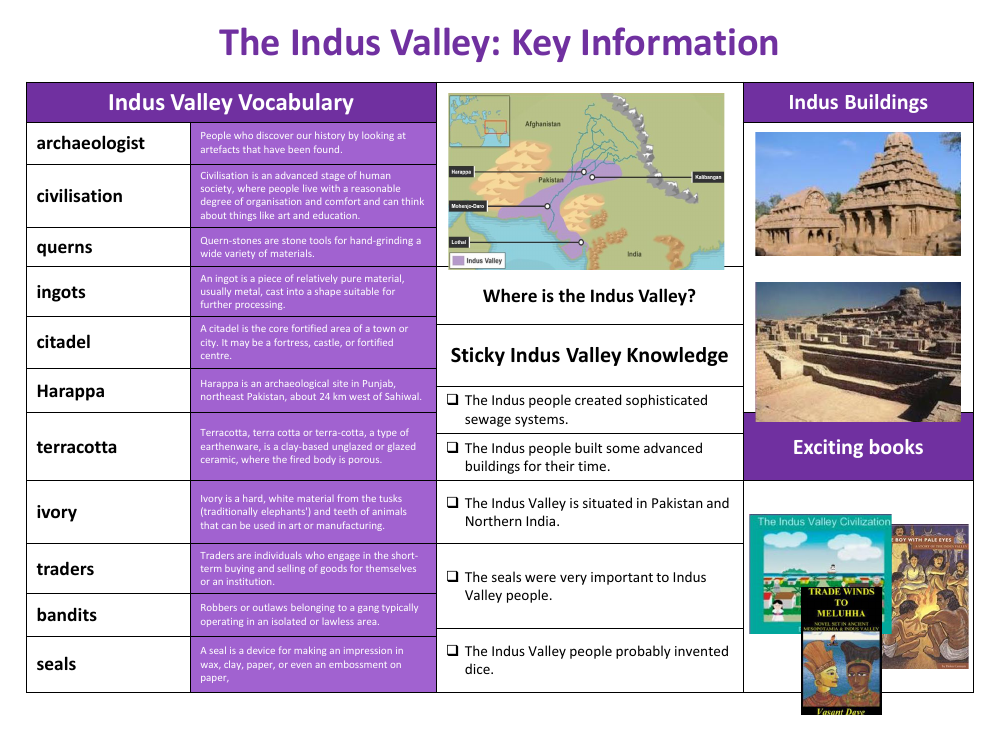
History Resource Description
The Indus Valley civilisation is recognised as one of the world's earliest advanced societies, emerging around 5,000 years ago in the regions that are now Pakistan and Northern India. It boasted over 1,400 urban areas, with notable cities like Harappa, Mohenjo-Daro, Lothal, and Kalibangan. This civilisation was remarkably sophisticated, with evidence of well-planned sewage systems and impressive buildings. Key terms associated with the Indus Valley include 'archaeologist', individuals who unearth history through artefacts, and 'civilisation', denoting an organised society with comforts and cultural pursuits such as art and education. Other terms like 'querns', 'ingots', and 'citadel' relate to the tools, materials, and structures that were integral to the Indus way of life.
Understanding the vocabulary of the Indus Valley deepens our appreciation of their achievements. 'Terracotta' refers to a type of ceramic material used by the Indus people, while 'ivory' indicates the valuable material derived from animal tusks, utilised in art and manufacturing. The concept of 'traders' and 'bandits' reflects the economic and social aspects of the time, with traders handling the exchange of goods and bandits often disrupting the peace. The Indus Valley civilisation also left behind intriguing artefacts like seals, which held great importance in their culture, and they are even credited with the invention of dice. These insights into the Indus Valley civilisation provide a glimpse into a complex and advanced society that laid the foundations for many modern concepts and technologies.
